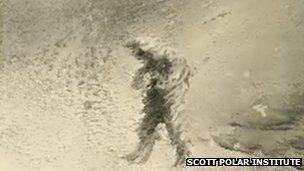There is no shortage of fantastical and horrific scenes at the frontiers of exploration in literature and real life. In space, we have “2001: A Space Odyssey,” the Star Trek franchise, and the terraforming epics of Kim Stanley Robinson. Journey to the Center of the Earth and 20,000 Leagues Under the Sea brought us vivid depictions of what lies under our feet and beneath the waves.
A recent BBC News article explored the history of bizarre expeditions to the Arctic, and even more bizarre hysteria that swept the populations back home.
England’s John Franklin set out to find the Northwest Passage in 1845, but he, two ships, and his crew of 134 men vanished. People reported having visions of the missing captain, and he became a popular request at seances.

Albert Operti (1852-1927) painted a number of dramatic and spooky arctic scenes. Russell Potter, Professor of English and Media Studies at Rhode Island College, describes some of Operti’s works on his blog.
There is a great quote in the BBC article from Dr Shane McCorristine, a cultural historian at the Scott Polar Research Institute:
“People describe fluttering, rustling noises emanating from the distant sky – which science tells us can’t be the case, but indigenous people have accepted for hundreds of years as the sound of dead souls,” he says.
“As much as Western explorers and scientists take a purely empirical approach, trying to disenchant native beliefs, there is always something they can’t explain which irritates and haunts them.”
“When you combine extreme landscapes with complicated human beings, strange things can happen. For example, on Shackleton’s march across South Georgia during his famous Antarctic expedition, all three of the team reported feeling the presence of an extra, fourth man near them at all times.”
